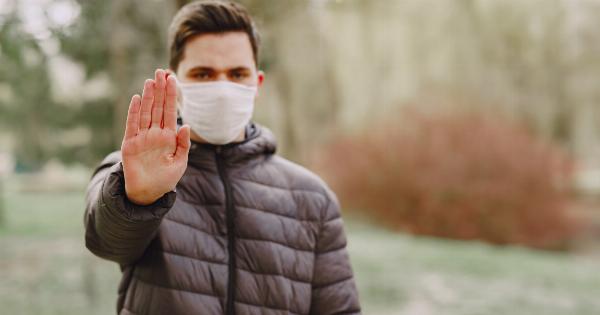When it comes to preventing the spread of contagious diseases, such as colds and flu, the simple act of sneezing can play a significant role.
Sneezing can release a cloud of contagious droplets into the air, which can then be inhaled by others, leading to the spread of illness. However, by following safe and effective sneeze techniques, we can minimize the risk of contagion and protect ourselves and those around us.
In this article, we will explore some practical tips for combatting contagion through proper sneezing etiquette.
1. Cover Your Mouth and Nose
One of the most basic yet crucial sneeze techniques is to cover your mouth and nose when you feel a sneeze coming on.
Using a tissue, handkerchief, or your elbow to cover your mouth and nose will help trap the droplets released during a sneeze, preventing them from becoming airborne and potentially infecting others.
2. Dispose of Used Tissues Properly
After using a tissue to cover your sneeze, it is essential to dispose of it properly. Tissues contaminated with respiratory droplets can still spread the virus, so make sure to discard used tissues in a lined trash bin.
Avoid leaving used tissues lying around or using them for any other purpose to minimize the risk of contagion.
3. Wash Your Hands Thoroughly
Proper hand hygiene is critical in combatting contagion. After covering your sneeze, make sure to wash your hands thoroughly with soap and water for at least 20 seconds.
This will help remove any potential viruses or germs that may have come into contact with your hands during the sneezing process.
4. Use Hand Sanitizer If Soap Isn’t Available
In situations where soap and water are not readily available, using hand sanitizer with at least 60% alcohol content can be an effective alternative.
Apply a sufficient amount of hand sanitizer to cover all surfaces of your hands and rub them together until they feel dry. Hand sanitizers can help kill many types of viruses and bacteria, reducing the risk of transmission.
5. Maintain Distance from Others
When you feel a sneeze coming on, it is crucial to try and maintain distance from others. Sneezing directly onto someone or in their immediate vicinity increases the risk of contagion.
By stepping away or turning your face away from others while sneezing, you can significantly reduce the chances of spreading your germs.
6. Avoid Touching Your Face
Touching your face, particularly your eyes, nose, and mouth, can transfer any germs on your hands into your respiratory system, increasing the risk of infection.
Be mindful of this and try to avoid touching your face as much as possible, especially during and after sneezing.
7. Practice Good Respiratory Hygiene
Besides covering your mouth and nose when sneezing, practicing good respiratory hygiene involves other habits to prevent the spread of contagion.
These include coughing or sneezing into your elbow rather than your hands, using disposable tissues instead of handkerchiefs, and ensuring proper disposal of tissues after use.
8. Use Airborne Infection Prevention Measures
In areas where contagious diseases are prevalent, additional measures can help combat contagion through sneezing. Using air filters, such as HEPA filters, can help reduce the number of infectious particles in the air.
Proper ventilation, regular cleaning of surfaces, and maintaining a clean environment can also aid in preventing the spread of contagion.
9. Stay Home When You’re Sick
One of the most effective ways to prevent the spread of contagion through sneezing is by staying home when you are sick.
If you have a contagious illness, such as a cold or flu, it is best to avoid contact with others to minimize the risk of infecting them. Resting at home and seeking medical attention, if necessary, will help in your recovery and protect those around you.
10. Educate Others on Proper Sneeze Techniques
Lastly, spread the knowledge of proper sneeze techniques. Educate your family, friends, and coworkers about the importance of following safe sneezing practices.
By sharing this information, you can contribute to a healthier and safer environment by reducing the risk of contagion.




























